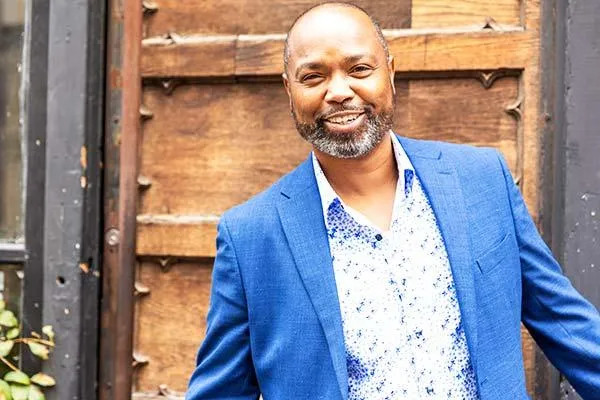Samori Coles
AI & Automation Expert Helping
Business Owners Build Smarter,
More Profitable Companies
Samori Coles
AI & Automation Expert Helping
Business Owners Build Smarter,
More Profitable Companies
Behind the Systems
Samori Coles is the founder and CEO of Fiya AI Business Systems, a company dedicated to helping business owners scale revenue, streamline operations, and regain their time through AI Employees and custom automation systems.
With over 20 years of experience running a successful audio recording studio and training school, Samori understands firsthand the challenges of managing every aspect of a growing business. That real-world experience led him to AI and automation, where he developed systems that reduced his own workload from over 40 hours a week to just a few hours, allowing his team to fully run the business.
Today, through Fiya AI Business Systems, Samori uses that expertise to help other entrepreneurs build smarter, more profitable businesses — businesses that run efficiently and profitably without constant hands-on involvement.
Combining AI Innovation with Real-World Business Strategy
Custom solutions for your business needs.
Training & Deploying AI Employees

AI Employees aren’t just futuristic tech — they’re practical tools that work alongside your team to handle critical front-end tasks like:
Responding to leads and customer inquiries
Following up automatically to increase conversions
Scheduling appointments and managing bookings
Sending review requests and follow-up messages
And much more

Building Custom Automation-Driven Business Systems

Beyond AI Employees, the real transformation happens when we design and implement custom automation systems built specifically for your business, including:
Capturing and qualifying leads automatically
Nurturing prospects with personalized follow-ups
Streamlining client onboarding without manual back-and-forth
Re-engaging past customers to maximize lifetime value
Why Work with Samori Coles?
When it comes to AI and automation, having the right tools is only part of the equation. Real transformation happens when those tools are paired with:
Custom-built systems designed specifically for your business
AI solutions tailored to your customer journey
Expert guidance from someone who’s spent over 20 years running a business — and knows exactly how to use AI and automation to make a company more efficient, profitable, and scalable
That’s exactly what Samori Coles delivers — combining cutting-edge AI technology with proven business systems expertise to help you build a business that runs smarter, serves your customers better, and gives you back the time and freedom you deserve.
Real-World Experience You Can Rely On
With over 20 years running a successful business — and more than seven years building AI, automation, and business systems — Samori brings real-world experience to every project.
You’re not just getting software — you’re getting a proven system, designed by someone who’s faced the same challenges and knows exactly how to help you build a smarter, more profitable business.

Real-World Experience You Can Rely On

With over 20 years running a successful business — and more than seven years building AI, automation, and business systems — Samori brings real-world experience to every project.
You’re not just getting software — you’re getting a proven system, designed by someone who’s faced the same challenges and knows exactly how to help you build a smarter, more profitable business.
Reclaim Your Time — While Your Business Grows
If you’re ready to streamline your operations, close more deals, and reclaim your time, Samori's team at Fiya AI Business Systems is ready to help.
Whether you’re interested in deploying your first AI Employee, building a custom automation system, or combining both for maximum efficiency — you’ll have the guidance, technology, and expertise you need every step of the way.
Imagine What You Could Do with Extra Time in Your Week:
Spend more quality time with family — and actually unplug from work
Focus on big-picture strategies to grow your business instead of chasing tasks
Reconnect with hobbies, fitness, or personal goals you’ve put on hold
Strengthen relationships with key clients and pursue high-value opportunities
Finally take that much-needed vacation without the business falling apart
Schedule a consultation call with Samori today and discover how smart automation and AI can help you build the business you always wanted — one that works for you, not because of you.
